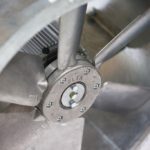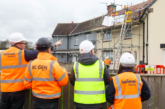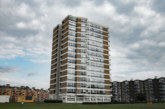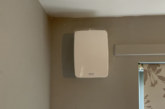A leading ventilation specialist has warned that improving indoor air quality (IAQ) must be an immediate priority, in order to restore faith in the safety of public buildings.
The COVID-19 pandemic has increased the focus on the air we breathe, meaning indoor spaces are now viewed with more scepticism than ever before. In a recent whitepaper, the UK government has established that poorly ventilated spaces carry a greater risk of virus transmission, even suggesting that ‘longer term consideration of infectious disease transmission needs to be embedded into building ventilation regulations’.
To ensure the safe return to communal buildings such as offices and shopping centres, there must be a greater emphasis on providing clean indoor air. Alongside meeting current building regulations, there also needs to be an effort to futureproof buildings against tighter legislation in the years to come.

David Millward, Group Product Manager at Elta Group BESA associate member, commented: “As we emerge from the shadow of the pandemic, IAQ must be at the forefront of the effort to rebuild trust in public buildings. We have to assure people that the air inside our structures is safe, and the most effective way to do this is to ensure ventilation systems are up to scratch.
“This requires specification beyond minimal levels of compliance, opting for systems which are designed with future legislation in mind, such as Elta Fans’ Revolution SLC EC. There must also be an awareness that if a building changes, whether that’s the physical layout or in terms of its purpose and occupancy levels, required ventilation rates adjust accordingly.”
Alongside improving ventilation systems themselves, there is a communication element to restoring faith in public spaces. Building occupants need to be assured that the air they are breathing is sufficiently clean and safe. One of the suggested ways this could be achieved is through a traffic light system on building fronts, displaying the IAQ much like the Food Hygiene Rating Scheme does for foodservice premises. This would provide an at-a-glance reassurance that the air within a structure is effectively ventilated.

David continued: “It’s all about making the invisible, visible. One of the biggest challenges facing our industry at the moment is the increased public scrutiny on the quality of indoor air, but this also represents an opportunity. The link between IAQ and a range of health issues is well established, so to be able to position it as a key factor in the health and safety of a building is something that should be welcomed.
“The last 12 months have brought air quality to the forefront of everyone’s minds, and it is clear that attitudes have fundamentally shifted. Without certainty, apprehension around the safety of public spaces will persist. As we hope to return to some sense of normality, we have to ensure IAQ is a top priority.”









